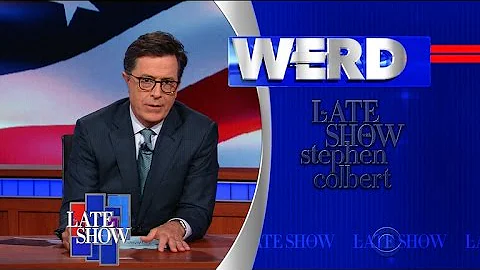Stephen K Lesser
age ~36
from Bellevue, WA
- Also known as:
-
- Stephen Kyle Lesser
Stephen Lesser Phones & Addresses
- Bellevue, WA
- 102 E Chelsea Ct, Tucson, AZ 85704 • (520)6038257
- Lancaster, PA
- 102 E Chelsea Ct, Tucson, AZ 85704
Specialities
Corporate • Corporate Finance • Investments • Mergers & Acquisitions • Public Finance & Tax Exempt Finance • Securities & Investment Fraud
Wikipedia

Stephen A. Lesser
view sourceStephen Alexander Lesser (born July 15, 1944) is an American architect, in practice in East Hampton, New York, specializing in modern residential and ...
Isbn (Books And Publications)

Resumes

Stephen Lesser
view source
Stephen Lesser
view sourceLocation:
United States

Stephen Lesser
view sourceLocation:
United States

Owner At Stephan J Lesser Woodworking
view sourceLocation:
Greater Seattle Area
Industry:
Construction
Lawyers & Attorneys

Stephen Lesser - Lawyer
view sourceSpecialties:
Corporate
Corporate Finance
Investments
Mergers & Acquisitions
Public Finance & Tax Exempt Finance
Securities & Investment Fraud
Corporate Finance
Investments
Mergers & Acquisitions
Public Finance & Tax Exempt Finance
Securities & Investment Fraud
ISLN:
920023233
Admitted:
2008
University:
University of Maryland, Baltimore County, B.A., 2001; University of North Carolina at Chapel Hill, M.B.A., 2017
Law School:
Washington and Lee University, J.D., 2008
Name / Title
Company / Classification
Phones & Addresses
Manager
First National Insurance Agency, LLC
Us Patents
-
System And Method For Customizing Extensible Web Part Menus
view source -
US Patent:7464369, Dec 9, 2008
-
Filed:Sep 11, 2003
-
Appl. No.:10/659845
-
Inventors:Nilanjan Banerjee - Seattle WA, US
Stephen I. Lesser - Redmond WA, US
Gregory Scott Lindhorst - Seattle WA, US -
Assignee:Microsoft Corporation - Redmond WA
-
International Classification:G06F 9/44
G06F 17/00 -
US Classification:717106, 715209, 715243, 715246
-
Abstract:A system and method that allows Web Part developers to customize Extensible Web Part Menus by programmatically adding, deleting, or modifying the commands that appear in the Extensible Web Part Menu. The customization may be performed by the Web Part developer either through a portal page on a server platform or on a client platform. Once the customization to the Extensible Web Part Menu is complete, the Web Part renders the customized Extensible Web Part Menu in a manner that is completely integrated into the rest of the Web Part on the portal page.
-
Dynamically Generating A Database Report During A Report Building Process
view source -
US Patent:7581189, Aug 25, 2009
-
Filed:Jan 31, 2006
-
Appl. No.:11/344509
-
Inventors:Zachary P. Woodall - Issaquah WA, US
Abigail E. Short - Redmond WA, US
Brian S. Ruble - Bellevue WA, US
Clinton D. Covington - Kirkland WA, US
Kumar Srinivasamurthy - Redmond WA, US
Pavel R. Karimov - Redmond WA, US
Stephen I. Lesser - Redmond WA, US
Tosh Kawai - Kirkland WA, US -
Assignee:Microsoft Corporation - Redmond WA
-
International Classification:G06F 3/00
-
US Classification:715762
-
Abstract:A browse mode designer allows an average user of a database application program to easily design reports. The user can use the browse mode designer to build meaningful reports that aggregate data and that combine related data into shaped patterns for easier consumption of information. The browse mode designer can interpret a user's actions and extrapolate what actions are to be performed. A user interface can be used to let the user change the resulting views while being designed.
-
Quick-Creating Objects In An Application
view source -
US Patent:7774755, Aug 10, 2010
-
Filed:Aug 31, 2005
-
Appl. No.:11/218024
-
Inventors:Zachary P. Woodall - Issaquah WA, US
Dan Hough - Seattle WA, US
Kumar Srinivasamurthy - Redmond WA, US
Nishant Kumar - Redmond WA, US
Pavel R. Karimov - Redmond WA, US
Stephen I. Lesser - Redmond WA, US
Clinton Covington - Kirkland WA, US
Michael J. McCormack - Snohomish WA, US
Christopher W. Bryant - Seattle WA, US -
Assignee:Microsoft Corporation - Redmond WA
-
International Classification:G06F 9/44
G06F 17/50
G06F 7/00
G06F 17/00 -
US Classification:717121, 717168, 707102, 703 13
-
Abstract:A palette of representations that can be generated by an application for database, spreadsheet, word processing, and the like, is provided in response to a request for a new object within the application. If the application already has one or more objects open at the time of the request, the representations are also determined based on the context of the data such as from any currently open object(s). The new object is then generated based on the selected representation from the palette, the context of the data, and a structure of data consumed by the application. The layout parameters for the new object are automatically set based on the current context, the structure of the data, and the selected representation.
-
Database Application Navigation
view source -
US Patent:8312048, Nov 13, 2012
-
Filed:May 19, 2009
-
Appl. No.:12/468067
-
Inventors:Steven Miles Greenberg - Seattle WA, US
Vitore Selca - Bellevue WA, US
Andrew Robert Miller - Issaquah WA, US
Stephen Lesser - Redmond WA, US
Clinton Dee Covington - Redmond WA, US
Ryan McMinn - Seattle WA, US
Pavel R. Karimov - Redmond WA, US
Konrad Tupaj - Kirkland WA, US
Amarinder Singh Grewal - Redmond WA, US
Robert Scott Cooper - Woodinville WA, US -
Assignee:Microsoft Corporation - Redmond WA
-
International Classification:G06F 17/00
-
US Classification:707791, 707802, 707822, 707828
-
Abstract:A database server application program is provided that is configured to provide a programmable interface into a database application by way of database services uniform resource locators (URLs). A database services URL utilized by the database application can be updated programmatically by program code executing within or under control of the database server application program. A macro action for use in conjunction with a database server application that provides functionality for displaying a database object, such as a form or report, in-place in a Web browser is also disclosed.
-
Automatic Layout Of Objects
view source -
US Patent:20070162844, Jul 12, 2007
-
Filed:Jan 12, 2006
-
Appl. No.:11/331387
-
Inventors:Zachary Woodall - Issaquah WA, US
Stephen Lesser - Redmond WA, US
Pavel Karimov - Redmond WA, US
Tosh Kawai - Kirkland WA, US
Kumar Srinivasamurthy - Redmond WA, US -
Assignee:Microsoft Corporation - Redmond WA
-
International Classification:G06F 17/00
-
US Classification:715517
-
Abstract:In some implementations, selected objects are arranged within a view. Each object is assigned an ordinal value, regardless of data type, according to the object's position in a first direction (e.g., horizontal position) relative to other objects of the layout grouping. The objects are linearly aligned along a line parallel to the first direction (e.g., horizontally). Each object's position is then minimally adjusted in the first direction (e.g., horizontally) such that the object has a minimum distance from each other object having a lower ordinal value without overlapping any of the other objects. In some other implementations, a computer-readable medium contains computer-readable instructions that, when executed by a computer system, cause the computer system to perform the above-described method. In still other implementations, a computer system has a memory containing computer-readable instructions that, when executed by the computer system's processor, cause the processor to perform the method.
-
Quick-Creating Objects In An Application
view source -
US Patent:20100094915, Apr 15, 2010
-
Filed:Dec 17, 2009
-
Appl. No.:12/640096
-
Inventors:Zachary P. Woodall - Issaquah WA, US
Dan Hough - Seattle WA, US
Kumar Srinivasamurthy - Redmond WA, US
Nishant Kumar - Redmond WA, US
Pavel R. Karimov - Redmond WA, US
Stephen I. Lesser - Redmond WA, US
Clinton Covington - Kirkland WA, US
Michael J. McCormack - Snohomish WA, US
Christopher W. Bryant - Seattle WA, US -
Assignee:MICROSOFT CORPORATION - Redmond WA
-
International Classification:G06F 17/30
G06F 3/048 -
US Classification:707805, 707E17009
-
Abstract:A palette of representations that can be generated by an application for database, spreadsheet, word processing, and the like, is provided in response to a request for a new object within the application. If the application already has one or more objects open at the time of the request, the representations are also determined based on the context of the data such as from any currently open object(s). The new object is then generated based on the selected representation from the palette, the context of the data, and a structure of data consumed by the application. The layout parameters for the new object are automatically set based on the current context, the structure of the data, and the selected representation.
-
Common Navigation Mechanism For Desktop And Browser-Based Applications
view source -
US Patent:20100199185, Aug 5, 2010
-
Filed:Feb 4, 2009
-
Appl. No.:12/365179
-
Inventors:Steven Miles Greenberg - Seattle WA, US
Vitore Selca - Bellevue WA, US
Andrew Robert Miller - Issaquah WA, US
Stephen Lesser - Redmond WA, US
Clinton Dee Covington - Redmond WA, US
Ryan McMinn - Seattle WA, US
Pavel R. Karimov - Redmond WA, US
Konrad Tupaj - Kirkland WA, US
Amarinder Singh Grewal - Redmond WA, US
Robert Scott Cooper - Woodinville WA, US -
Assignee:Microsoft Corporation - Redmond WA
-
International Classification:G06F 3/048
-
US Classification:715733
-
Abstract:A client application provides a user interface for defining a form that includes a navigation control. The navigation control includes two or more selectable tabs that are each associated with a target, such as another form or a report. When one of the selectable tabs on the navigation control is selected using an appropriate user input device, the target associated with the selected tab is displayed in the form. The client application also provides functionality for publishing a form including navigation controls to a server application, thereby making the form and the navigation control accessible through a Web interface.
-
Dynamically Controlling Collisions Of Form Controls In An Electronic Document
view source -
US Patent:20120311423, Dec 6, 2012
-
Filed:Jun 6, 2011
-
Appl. No.:13/154188
-
Inventors:Benjamin Hodes - Seattle WA, US
Jordan Mandel-Iaia - Seattle WA, US
Stephen I. Lesser - Redmond WA, US -
Assignee:Microsoft Corporation - Redmond WA
-
International Classification:G06F 17/00
-
US Classification:715221
-
Abstract:Collisions resulting from the movement of form controls in an electronic document may be dynamically controlled. A user interface may be displayed on a computer which includes a design surface for manipulating the form controls in the electronic document. A selection of one or more form controls in the electronic document may be received by the computer. The selected form controls may be moved over the design surface from an original location. Non-selected form controls on the design surface may be moved to a new location on the design surface upon colliding with the selected form controls being moved. The non-selected form controls may further be aligned to a hidden grid within the design surface after being moved.
Classmates

Stephen Lesser
view sourceSchools:
Chadwick School Palos Verdes Peninsula CA 1953-1955, Desert Sun/Elliott-Pope High School Idyllwild CA 1953-1957
Community:
Michelle Fowler, Tina Loftin, Susan Olsen, Sharon Wiedenhaupt

Chadwick School, Palos ve...
view sourceGraduates:
Kenneth Heilfron (1984-1988),
Stephen Lesser (1953-1955),
Chris DesBarres (1995-1999),
Gale Ebert (1954-1955),
Harry Longstreet (1954-1958)
Stephen Lesser (1953-1955),
Chris DesBarres (1995-1999),
Gale Ebert (1954-1955),
Harry Longstreet (1954-1958)

Desert Sun/Elliott-Pope H...
view sourceGraduates:
Kari Promisel (1982-1986),
James Tipper (1983-1987),
Stephen Lesser (1953-1957),
Peter Cropsey (1967-1971)
James Tipper (1983-1987),
Stephen Lesser (1953-1957),
Peter Cropsey (1967-1971)
Youtube
Googleplus

Stephen Lesser

Stephen Lesser
view source
Stephen Lesser
view sourceGet Report for Stephen K Lesser from Bellevue, WA, age ~36





